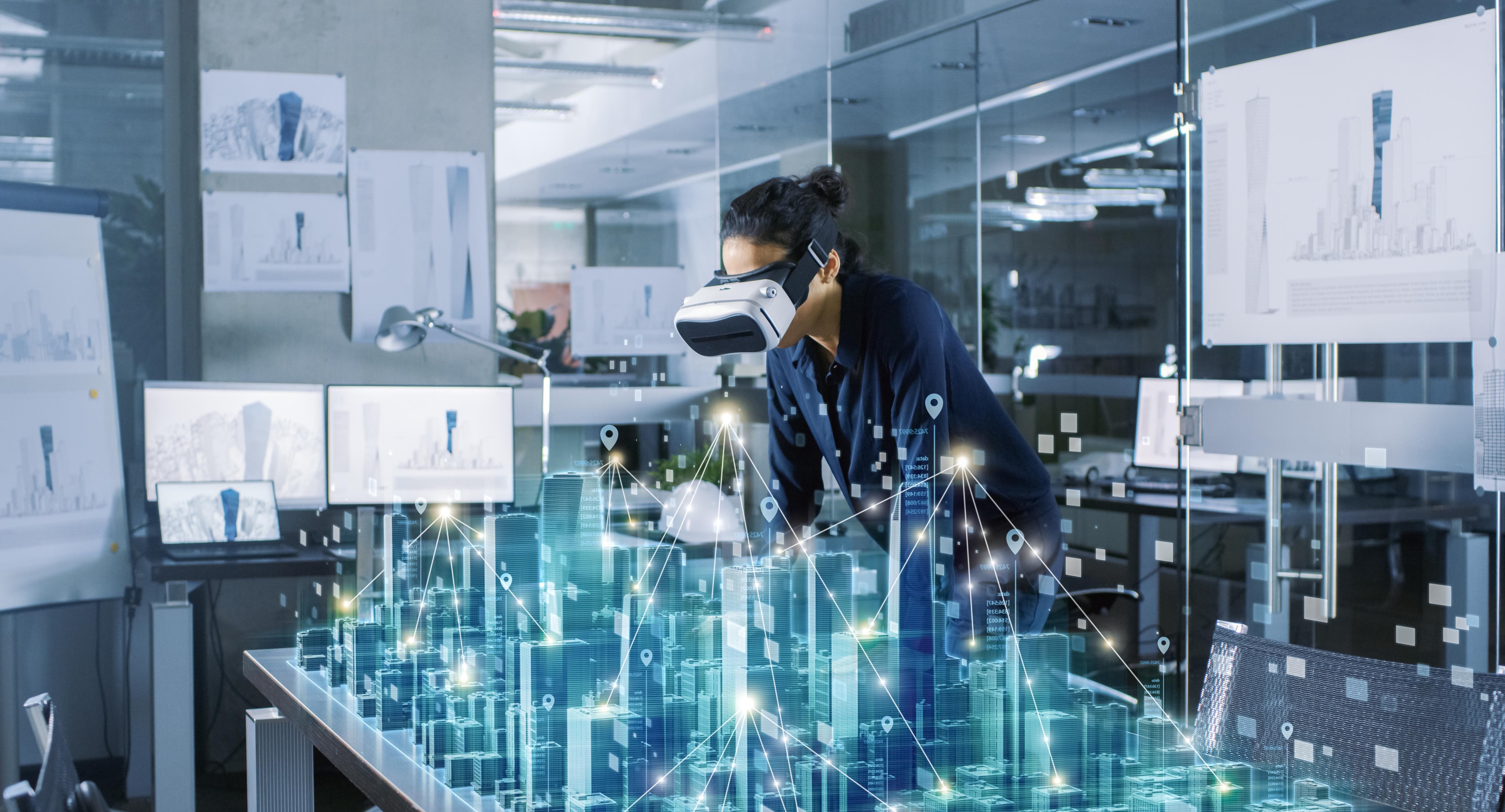Digital Twins for the Built Environment

KEY INFORMATION
TECHNOLOGY OVERVIEW
A Digital Twin is a digital representation of a physical object or system, often used in various industries for simulation, analysis, and monitoring. In the built environment, which encompasses everything from buildings and infrastructure to urban planning, Digital Twins have a wide range of potential applications that can significantly enhance efficiency, sustainability, and overall quality of life.
Digital twins have emerged as a transformative concept in the built environment, revolutionizing how buildings, infrastructure, and cities are designed, constructed, and managed. This innovative technology leverages the power of digital simulations and real-time data to create virtual replicas of physical assets, offering numerous benefits across various sectors within the built environment.
The technology owner is seeking co-development partnerships with building owners, facity management companies, smart city or urban planners to adopt their digital twin technology in achieving their sustainability objectives.
TECHNOLOGY FEATURES & SPECIFICATIONS
- Digital twin model development & data gap report
This stage involves the creation of a baseline digital twin of the proposed facility. - Measured performance data input
This involves gathering measured data from various sources. This would be the building BMS system and/or any other source of live or streaming operation data. - Model calibration
This includes the testing of the model with logic checks and balances to verify the basic inputs. Actual building experience and monitored data will be used to make any final adjustments and calibration so that the virtual model outputs align closely to reality. - Analysis & diagnosis
Once the baseline model is complete and confidence exists as to its validity from the calibration accuracy (over 95% accuracy), the model can be used to run “what-if” scenarios for the future. Retro commissioning (RCx) i.e. change in operations without any additional investment options will be analysed. - Corrective action
The team will develop a set of bespoke/customized alarms, alerts and control rules to continuously optimize building energy performance using real-time data. - Deployment
A workshop will be conducted to make the participating stakeholders aware of the digital twin process. Required software access as well as the user guides will be shared during the deployment. - Monitoring
The final stage will be the monitoring of the digital twin post-implementation.
POTENTIAL APPLICATIONS
Some key potential applications for Digital Twins in the built environment:
- Architectural and Urban Planning: Digital Twins can be used to create virtual models of cities, allowing urban planners and architects to simulate and visualize different design scenarios.
- Energy Efficiency and Sustainability: Digital Twins can be used to model and simulate a building's energy consumption and environmental impact.
- Facility Management: Once a building is operational, Digital Twins can be used for ongoing facility management.
- Smart Cities: Digital Twins can serve as the backbone of smart city initiatives. By creating digital replicas of urban infrastructure and systems, city authorities can monitor traffic flow, manage waste collection, and respond to emergencies more effectively.
- Real Estate Development: Developers can use Digital Twins to create virtual walkthroughs of properties, allowing potential buyers or tenants to explore spaces before they are built.
Market Trends & Opportunities
The Digital Twin industry is growing phenomenally, the Digital Twin Market size is expected to reach 63.5 Bil USD by 2027. The number of cases using digital twins for implementation is likely to go up to 23% in 2024 from 10% in 2021.
The opportunities to use a digital twin in a built environment are quite a few:
- Building Performance Optimization: Digital Twins allow for continuous monitoring of a building's performance, including energy consumption, HVAC systems, and structural integrity.
- Sustainable Building Practices: With increasing emphasis on sustainability, Digital Twins can facilitate the design and monitoring of green and sustainable buildings.
- Urban Planning and Smart Cities: Digital Twins extend beyond individual buildings to entire urban environments. Cities can create virtual replicas of their infrastructure to optimize traffic flow, manage resources efficiently, and improve the overall quality of life for residents.
- Real Estate and Property Management: Property owners and managers can use Digital Twins to enhance tenant experiences, monitor building health, and predict maintenance needs.
- Facility Maintenance and Operations: Digital Twins provide real-time insights into the condition of assets within a facility.
- Data-Driven Decision-Making: The wealth of data generated by Digital Twins allows for data-driven decision-making at all stages of a building's lifecycle.
- Integration with IoT and AI: The combination of Digital Twins with the Internet of Things (IoT) and Artificial Intelligence (AI) technologies further enhances their capabilities.
Unique Value Proposition
- Improved Design and Simulation: Architects and engineers can use Digital Twins to experiment with different design concepts and test how they perform in various conditions. This allows for better optimization of building systems, materials, and energy usage, resulting in structures that are more sustainable and resilient.
- Real-Time Monitoring and Maintenance: Once a building is operational, the Digital Twin continues to add value by collecting and analyzing real-time data from sensors and IoT devices.
- Energy Efficiency: Digital Twins can optimize energy usage by analyzing data from sensors that monitor temperature, humidity, occupancy, and more.
- Cost Savings: By preventing errors, reducing downtime, and improving energy efficiency, Digital Twins can generate substantial cost savings over the entire lifecycle of a building or infrastructure project.
- Sustainability: Digital Twins enable sustainable design and operation by allowing architects and engineers to assess the environmental impact of their decisions.
- Risk Management: By simulating different scenarios and continuously monitoring a building's performance, Digital Twins can help identify potential risks and vulnerabilities, allowing for proactive risk management and disaster preparedness.
- Remote Collaboration: In an increasingly globalized world, Digital Twins facilitate collaboration among teams located in different parts of the world.
- Data-Driven Insights: Digital Twins generate vast amounts of data, which can be leveraged for data-driven insights and machine learning applications.
